Part 2 of a series looking backstage at the upcoming Mainstage Production
The cast of characters that Patricia (Peach) Jonzon (BFA – Multidisciplinary ’14), Costume Designer for the production, and Lynn Hopkins (BFA – Dramatic Arts ’93) are dressing in The University of Lethbridge Production of Jesus Christ Superstar with Music by Andrew Lloyd Webber and Lyrics by Tim Rice* includes the good, the bad and the angelic. Having costumes that reflect the role is no easy feat.
For example, Caiaphas is a Jewish high priest who feels threatened by Jesus’ increasing popularity and he worries people will rally around Jesus and challenge the authority of the high priests.
“We have them look militant, very black and strict looking versus Jesus who’s very soft looking. He’s in the light colours and his clothing is very loose, like the free thinking and new ideas he brings,” says Jonzon. “Costume is amazing because you can help people understand who these characters are based on how they are dressed.”
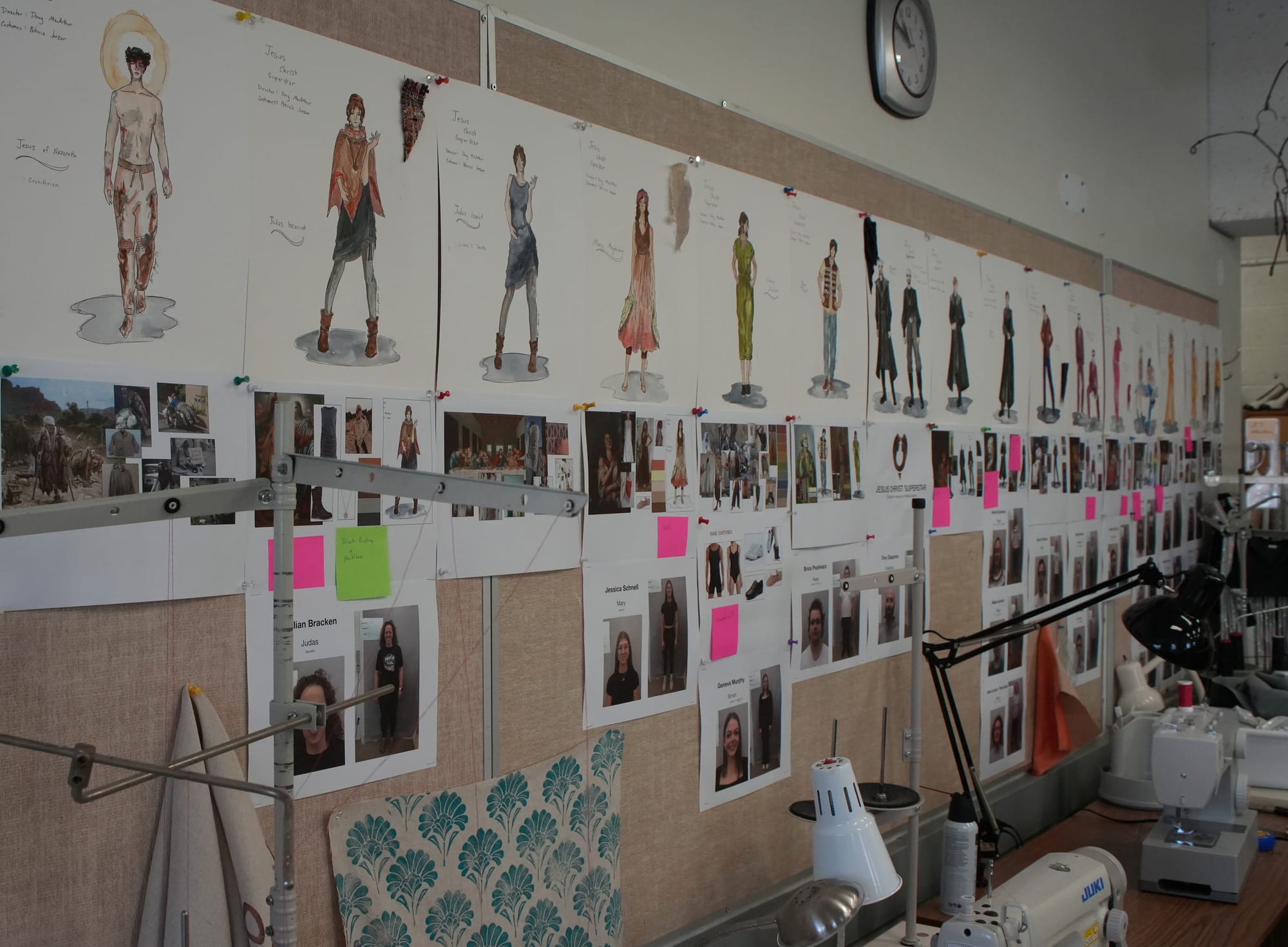
Jonzon began her research by rewatching the musical and talking with director Doug MacArthur about his vision for the production. She collected images for the various characters to create a design bible and then sketched out ideas for each costume, including fabric and colours. For example, an actor dressed in a soft harem pant, or a jogger-style pant won’t be seen as someone with authority, while someone like Pontius Pilate, the governor of the Roman province of Judea, would need a costume that shows he has more power.
“I used a lot of warm tones for Jesus’ followers and a lot of blacks for Pilate and I put the soldiers in red,” she says. “Red is a very powerful colour and it makes the soldiers visible and intimidating.”
Bringing the director’s vision to life on the stage meant not only developing concepts for individual actors but also groups of people like the apostles during the Last Supper scene.
“I wanted the apostles to be identified by having some sort of garment that has blocked printing on it,” says Jonzon. “By giving some sort of repetition and symbolism to their garments, people can see they’re part of the same club.”
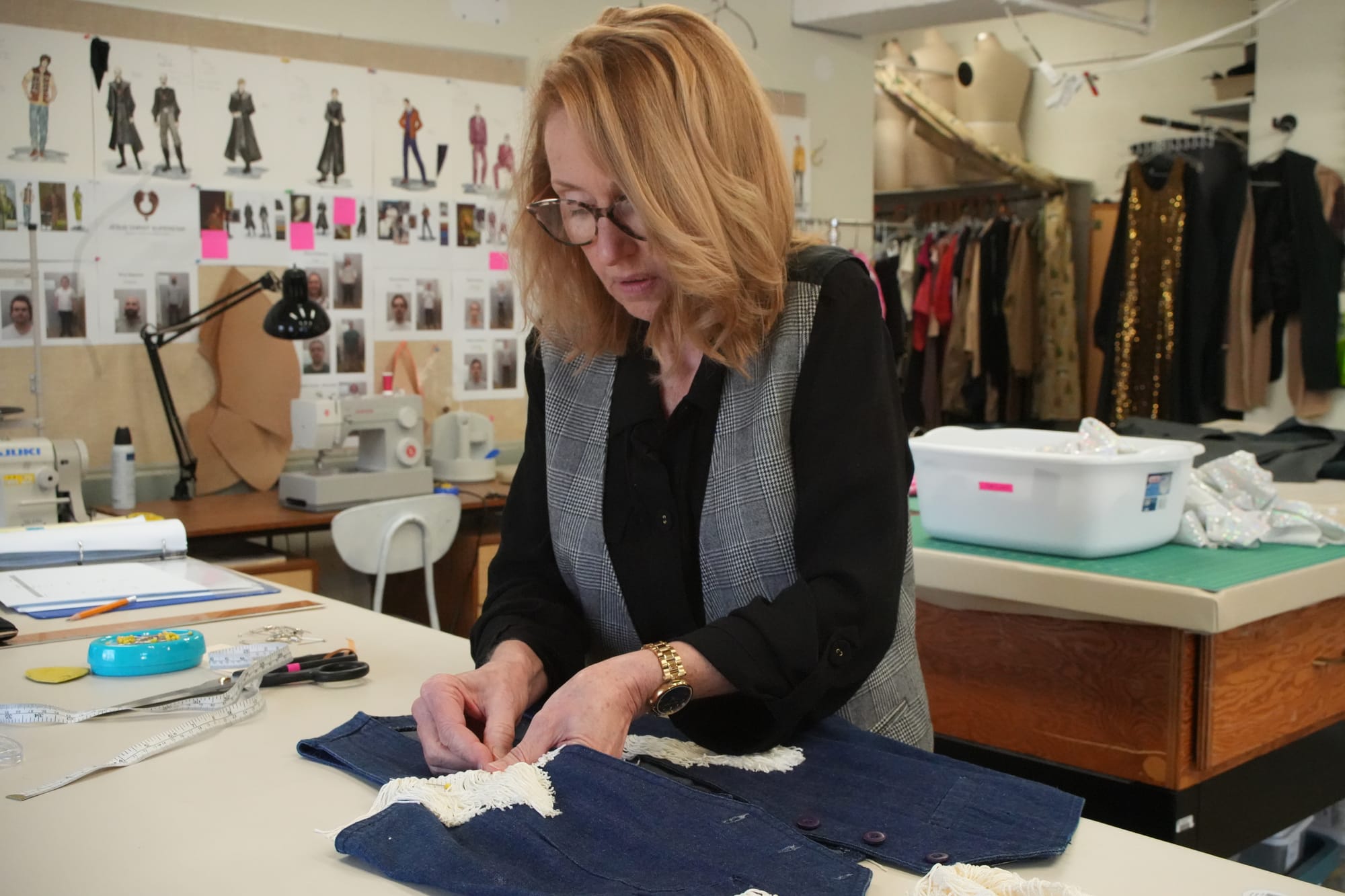
Because the production has an ensemble cast, an actor will slip off stage and reappear as a different character. Having a different costume helps the actor embody their character and helps the audience identify the actor as a new character.
“The magic of theatre is that you can change people with costumes and makeup, and you can tell a story and get the audience to buy in,” she says.
Creating the costumes requires not only searching for what might already be on hand in the Costume Shop but also ordering new materials, dying fabric, painting clothes and shoes and fabricating new materials using whatever might be on hand.
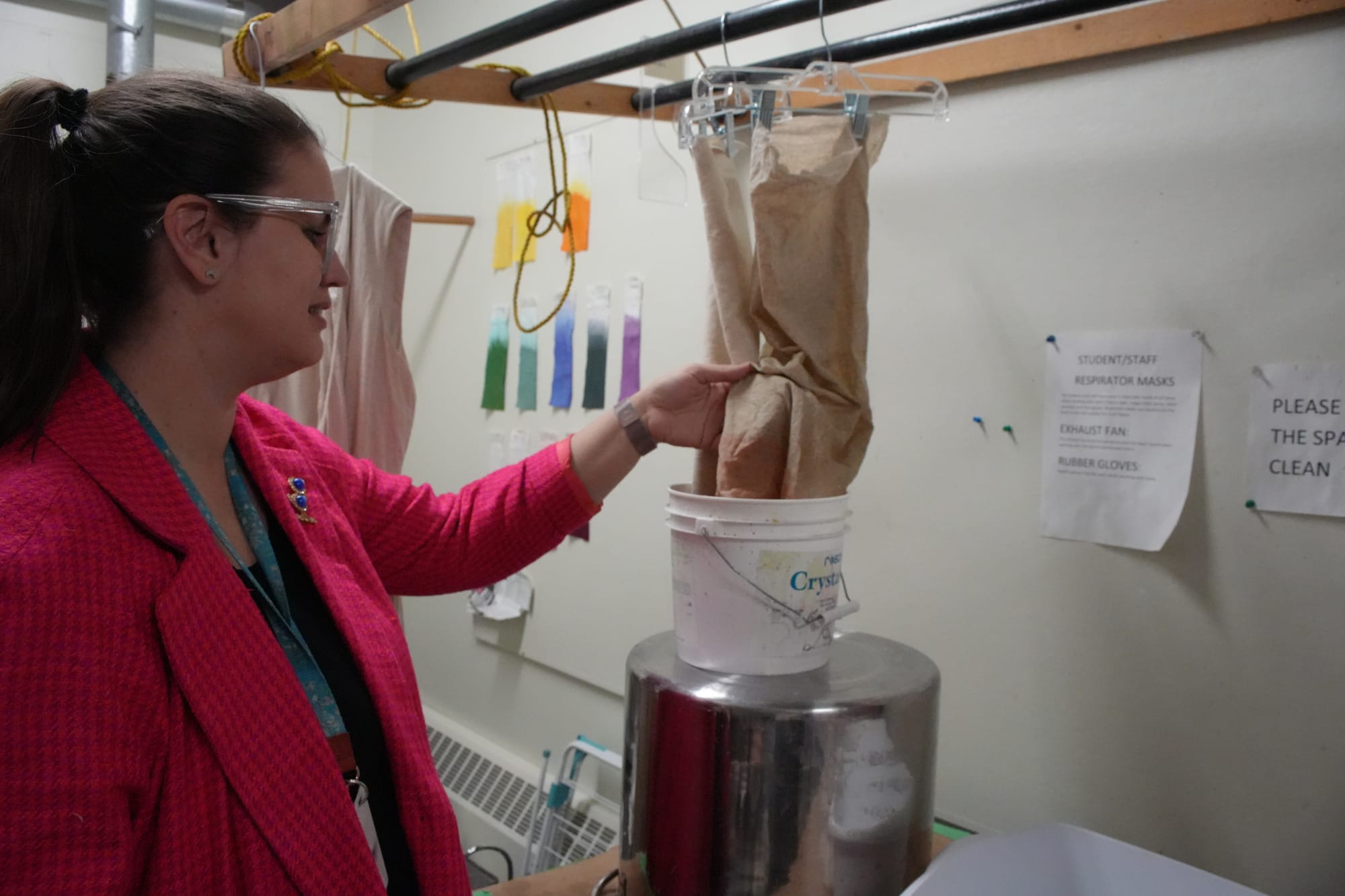
“With costumes, the actors come to life,” she says. “Usually, we start with a shoe fitting because we want them to work in their footwear early on. Putting them into a shoe they’ve never been in can change their whole posture and stance. You can change someone’s shape and make them feel 10 feet tall with the right cut of clothing. It’s an amazing illusion you can create. It’s always fun to see actors come to life and how they embody those characters. A costume is like a skin they put on. Theatre is a collaboration; it will never be just one element. It’s all the elements converging that make the magic happen.”
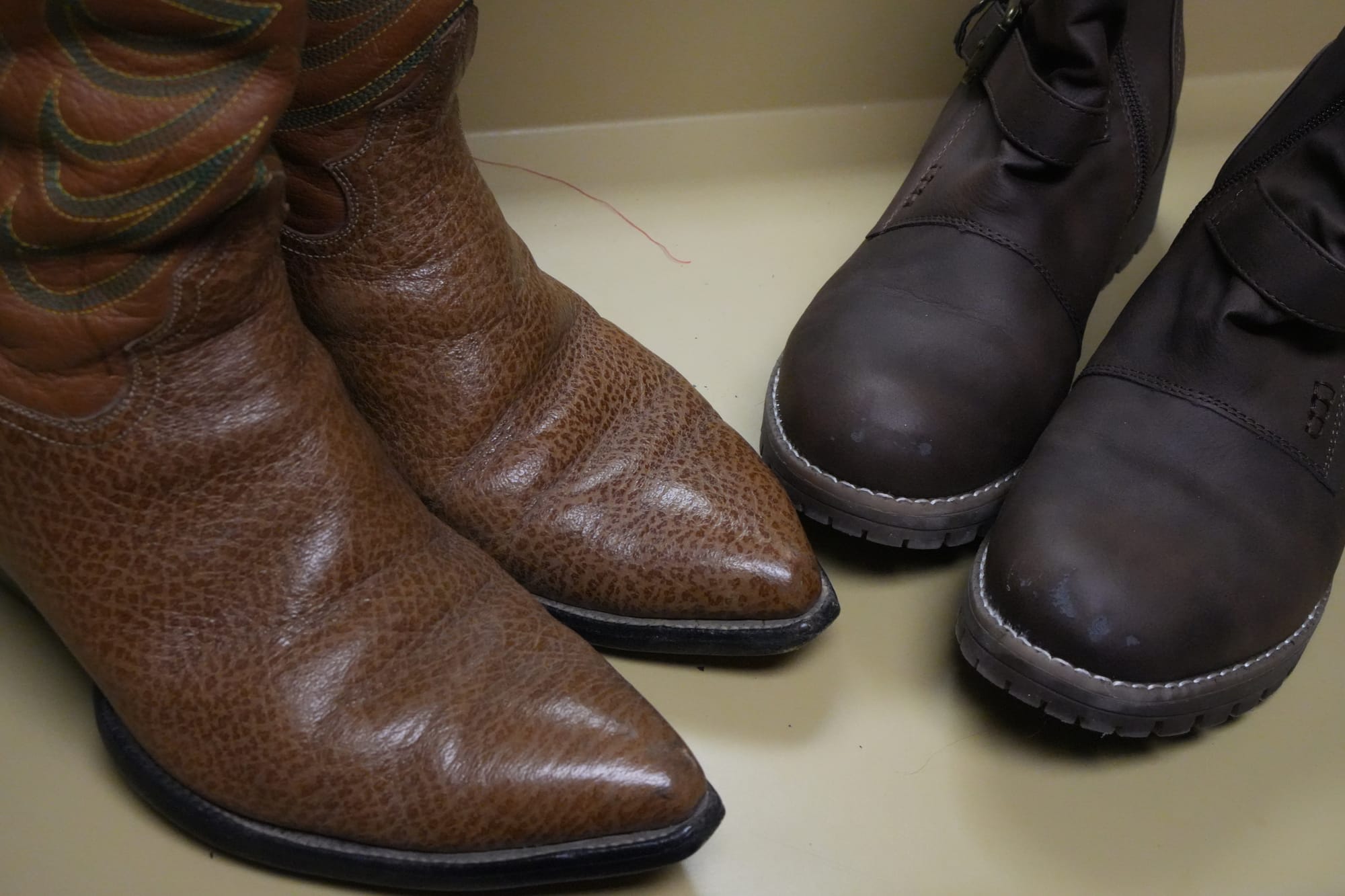
Students have been an integral part of the costume-creation process, with four students working in the Costume Shop this semester. They’ve been sewing and during the shows, they’ll be the behind-the-scenes running crew and help with quick changes.
Autumn Adrian is a fourth-year dramatic arts technical design student. She’s serving as an assistant designer and has been busy with carving block prints for the apostles’ costumes, attending fittings, production meetings, rehearsals and helping out whenever and wherever needed.
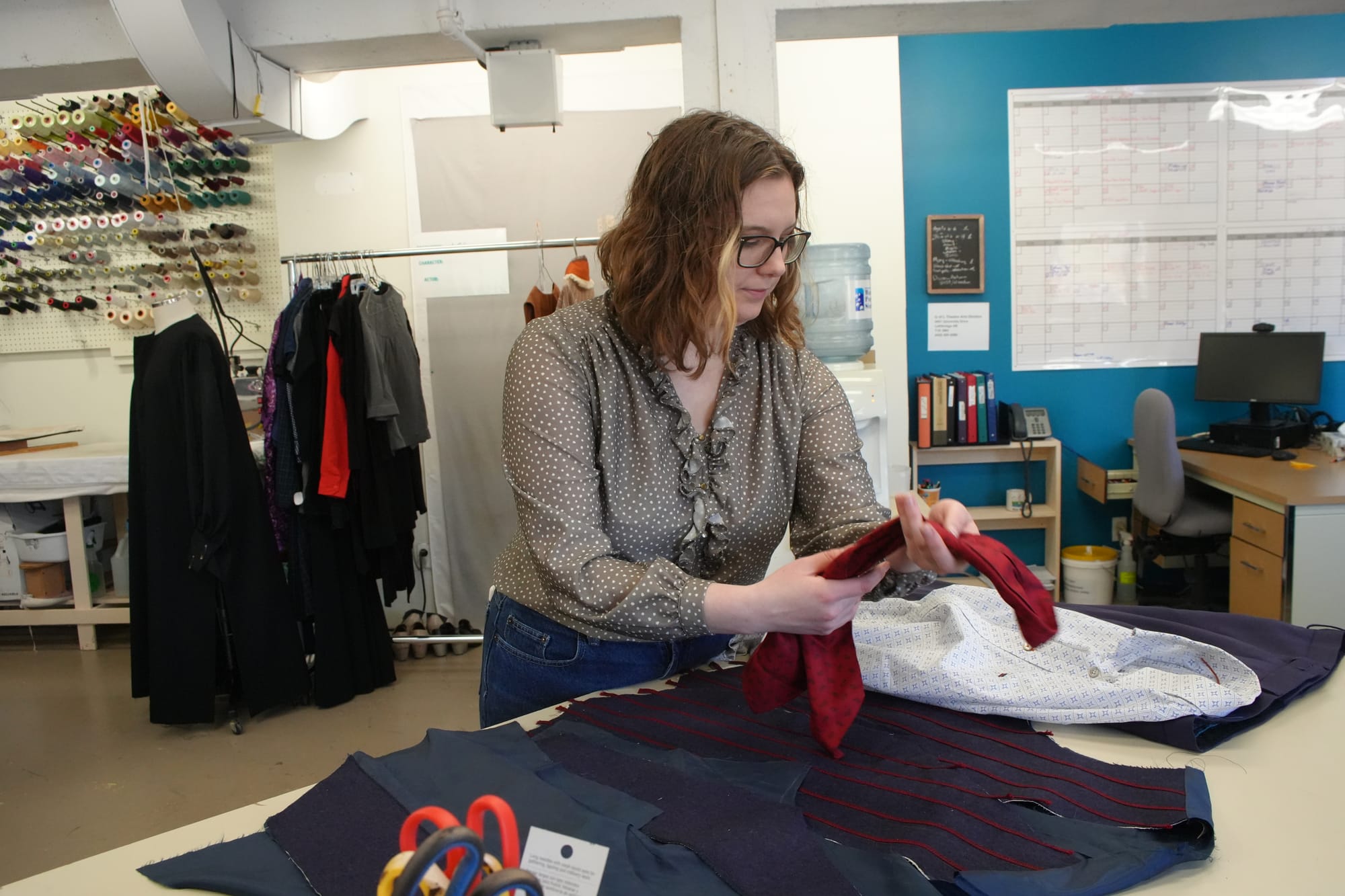
“I wanted to learn how to make clothes because costumes are something I’m interested in,” says Adrian. “I like all the different bits of symbolism you can use in a costume, and I’ve enjoyed learning what you can do with colour and texture and how to put them all together.”
Jonzon says she’s seen the students’ skills and confidence grow and that will help them once they graduate and begin their careers. After completing a fashion design diploma at Lethbridge College, she attended ULethbridge and earned a BFA – Multidisciplinary (Art, Drama and Music). Her education allowed her to obtain work as a Daily Costumer, Costume Set Supervisor and Assistant Costume Designer on several TV productions.
“I would love nothing more than our students having as much success as I did after I finished my degree,” she says. “These shows are really important and give them the skills to be able to jump into industries on a more professional level.”
Jonzon has a showstopper costume crafted for King Herod but it’s top secret until showtime. Combined with the song and the choreography, she promises audiences will be in for a treat.
“It’s going to be amazing,” she says.
The show runs from March 12 to 16 in the University Theatre.
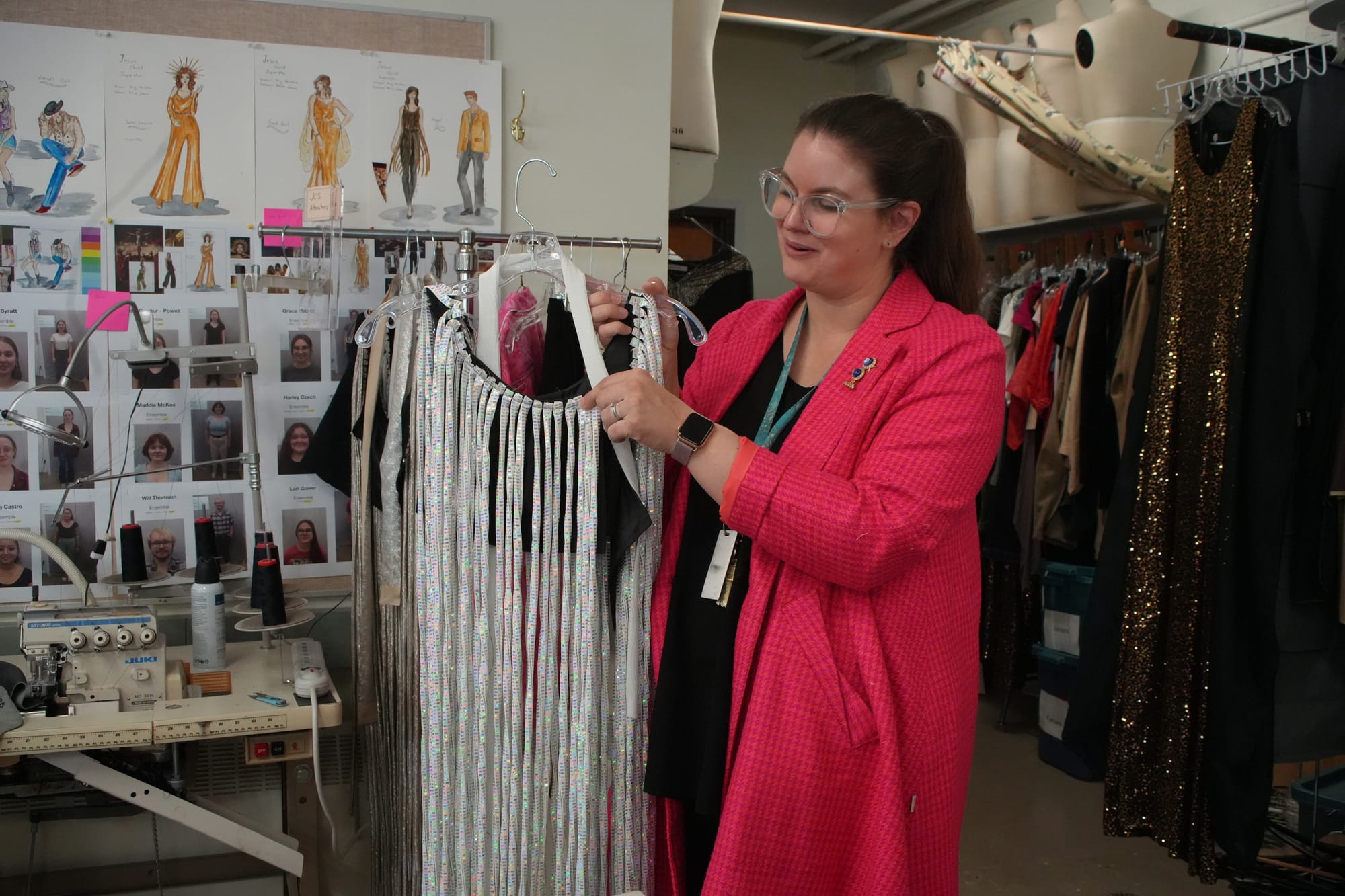
*JESUS CHRIST SUPERSTAR is presented by arrangement with Concord Theatricals on behalf of The Really Useful Group.
www.concordtheatricals.com